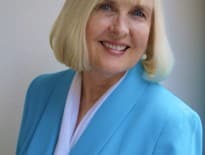In a decision anxiously anticipated by religious organizations across the commonwealth, the Massachusetts Supreme Judicial Court recently recognized in a unanimous decision that for the purposes of property taxes, a house of worship is more than a chapel used for religious services and classrooms used for religious instruction. It held that the accessory portions of the property, including parking lots, anterooms for greeting and hanging coats, the parish halls, offices for clergy and staff, and storage areas are also exempt as long as they are used for purposes connected to or in support of religious worship.
The ruling provides clear guidance for the religious property tax exemption in Massachusetts. The case, Shrine of Our Lady of LaSalette Inc. v. Board of Assessors of Attleboro, was on appeal from a decision of the Appellate Tax Board, originally decided in favor of the Attleboro assessors. The court found that property owned by a religious organization is exempt from local real estate taxation under G.L. Chapter 59, Section 5, Clause Eleventh, where the “dominant purpose of the questioned portion of the property is religious worship or instruction, or purposes connected with it.”
Hundreds of thousands of people visit the LaSalette Shrine each year to participate in a broad range of activities on the property, including daily Mass and confessions, special prayer services, retreats and a holiday festival of lights. The LaSalette Shrine also hosts a variety of other functions and activities, including fundraising events.
In addition to its main church, the LaSalette Shrine’s facilities consist of indoor and outdoor chapels, gardens containing religions statues and artifacts, a welcome center, a maintenance building, a former convent leased to a nonprofit organization as a safe house for battered women, and surrounding lands. For the tax year in question, the LaSalette Shrine’s property included approximately 199 acres of land, of which approximately 110 acres served as a wildlife sanctuary subject to a conservation easement and under the control of the Massachusetts Audubon Society.
Determining Dominant Purpose
After 60 years of operations without its tax exemption being questioned, in fiscal year 2013 the city’s assessors determined that the LaSalette Shrine owed property taxes of $92,293. The assessors contended that the welcome center was only partially exempt and the maintenance building, safe house and wildlife sanctuary were fully taxable.
A key question for the court was whether portions of the property where activities taking place that were not strictly religious worship or instruction should be exempt from property tax. The welcome center, for example, is host to a cafeteria, a soup kitchen on a weekly basis, a gift shop and is used for various activities throughout the year. Masses are held in the center and most visits and pilgrimages to the LaSalette Shrine begin there. The assessors believed that the area should be taxed according to the percentage of time and space used for nonreligious activities, resulting in a tax based on 40 percent of the assessed value of the center and surrounding land.
The court, however, rejected this approach and found that the scope of the religious exemption had been defined too narrowly. A similar conclusion was reached regarding a maintenance building used to store items for the LaSalette Shrine’s festival of lights, inventory for the gift shop and various vehicles. Because the structure’s dominant purpose is connected with the religious worship and instruction offered at the LaSalette Shrine, it is exempt from taxation.
While the court held that the practice of religion includes charitable works, it found that the safe house and the wildlife sanctuary did not meet the “dominant purpose” test because they were under the exclusive control of other organizations whose primary purposes were charitable, not religious. The court noted that such uses would have qualified for the charitable tax exemption had the LaSalette Shrine filed the required Form 3ABC.
This decision clarifies that when a portion of church property is used for purposes other than religious worship or instruction, that portion of the property will remain exempt from property taxes so long as its dominant purpose is religious worship or instruction or purposes connected thereto or in support thereof, but the religious exemption is not applicable to a portion of church property leased to and under the exclusive control of another tax-exempt charitable organization. Thus, a portion of a church’s space used for a nursery school or day care center as part of its mission would be exempt under Clause Eleventh. If, however, they are leased to and operated by another charitable organization, a Form 3ABC must be filed by March 1 of each year in order to secure the charitable exemption from local property taxes.
Most importantly, the court’s ruling should give religious organizations peace of mind that the use of their facilities for bake sales, carnivals and other fundraising activities or for wedding receptions and community activities will not subject their property to real estate taxation.
Tom Guidi is a partner at Hemenway & Barnes LLP, which argued for the LaSalette Shrine in the SJC case. He may be reached at tguidi@hembar.com.






